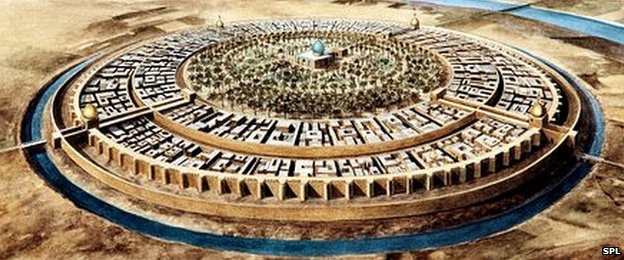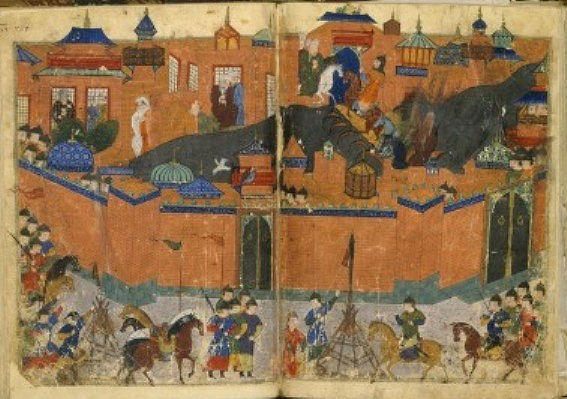A major political and cultural center, Baghdad was sacked and nearly entirely destroyed by the Mongols in 1258. Baghdad had been the capital of the third Islamic caliphate, the Abbasids, since the eighth century. Located along the Tigris River, it was well-known across the medieval world for its intellectual centers and artistic hubs. The House of Wisdom, for example, was a famous library where scholars were devoted to translating Arabic, Greek, Hindi, and Persian works on astrology, philosophy, science, theology, and much more. Unfortunately, Baghdad found itself in the path of the destructive forces of the Mongols.
After the death of Chingiss Khan, the Mongols increasingly turned their attention southward, expanding the empire into the Middle East. Once the stronghold of Alamut along the Caspian Sea was conquered, there was nothing between the Mongols and Baghdad. Hulegu, commander of the Mongol forces in Persia and grandson of Chingiss Khan, sent a message to the caliph Al-Muta’sim, commanding him to surrender and to become a vassal of the Mongols. Al-Muta’sim refused, but did not immediately prepare an army to fight Hulegu. When the 20,000 person strong cavalry was finally assembled, it was too late. They were quickly defeated by expert Mongol horsemen who broke the dams along the Tigris River, trapping Baghdad and its army.
The Mongols laid siege on Baghdad, digging a ditch around the city and breaching the walls with catapults and siege engines. After just two weeks, Baghdad surrendered and three days later the Mongols entered the city wreaking havoc, destruction and an intense massacre. Contemporary accounts describe the destruction of major sites such as the House of Wisdom, the Great Library of Baghdad, the caliph’s palace, and numerous mosques. The reports also tell of the killings of Baghdadi citizens as they tried to flee. The caliph was captured and, after being forced to watch the murder of his subjects, was killed by stampede. Since Mongols believed it was offensive to the earth to shed royal blood, they rolled Al-Muta’sim in a rug and trampled him with cavalry. The Mongol destruction of Baghdad was so great that the city did not recover its former importance until modern times. However, during Mongol rule Baghdad experienced a slight rebirth as the city became a regional trading center.
Today, Baghdad is the capital of Iraq. With over 7 million inhabitants, it is considered one of the largest cities in the Arab world. In recent times, Baghdad suffered yet another invasion, this time by American troops. Since American military withdrawal in 2011, Baghdad has begun to rebuild its infrastructure, but it remains in a dire state. It has been ranked one of the least hospitable cities in which to live. Yet, the Iraqi government continues to be hopeful for its revival.
An artist’s rendering of Baghdad before it was sacked by the Mongols.
A Persian drawing of the Sack of Baghdad by the Mongols in 1258.

